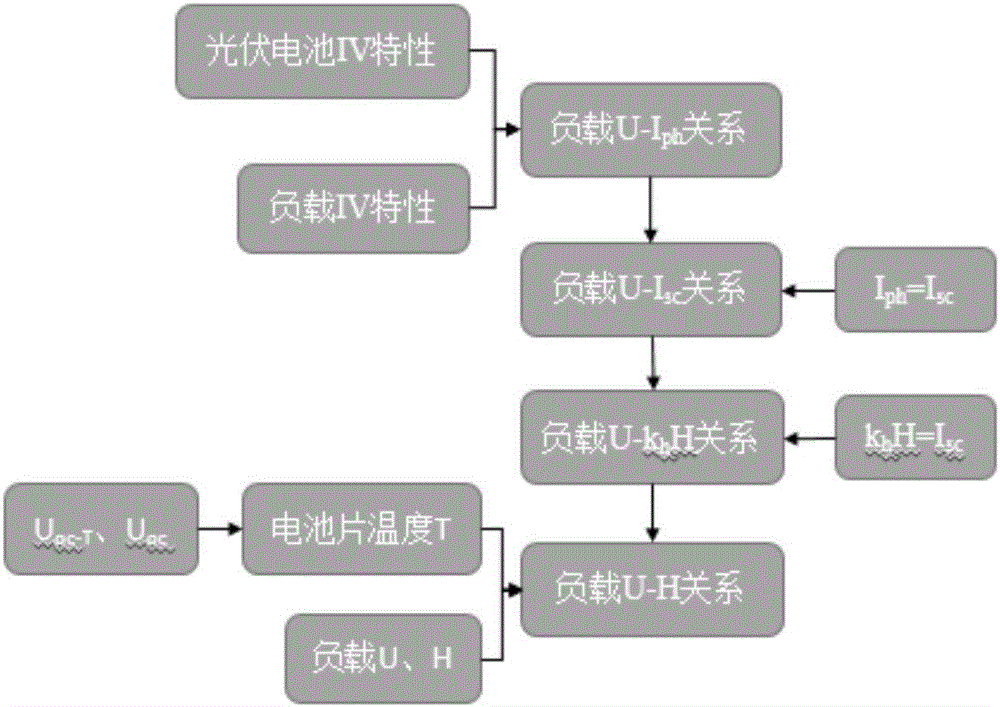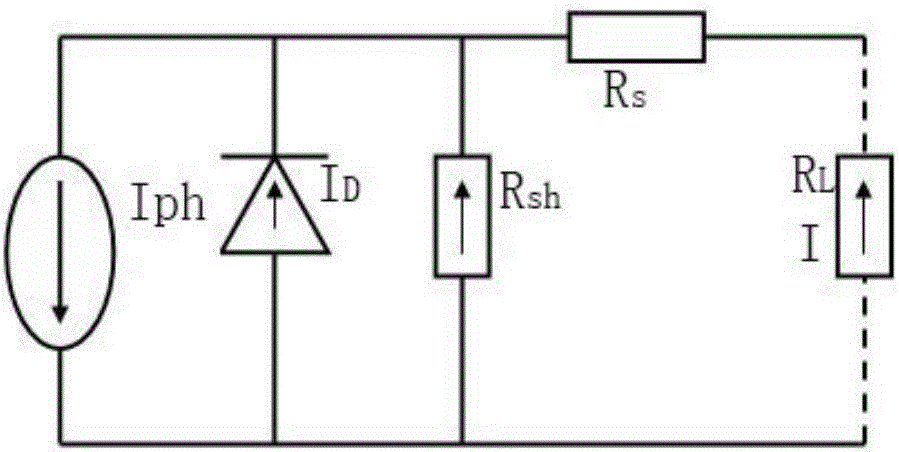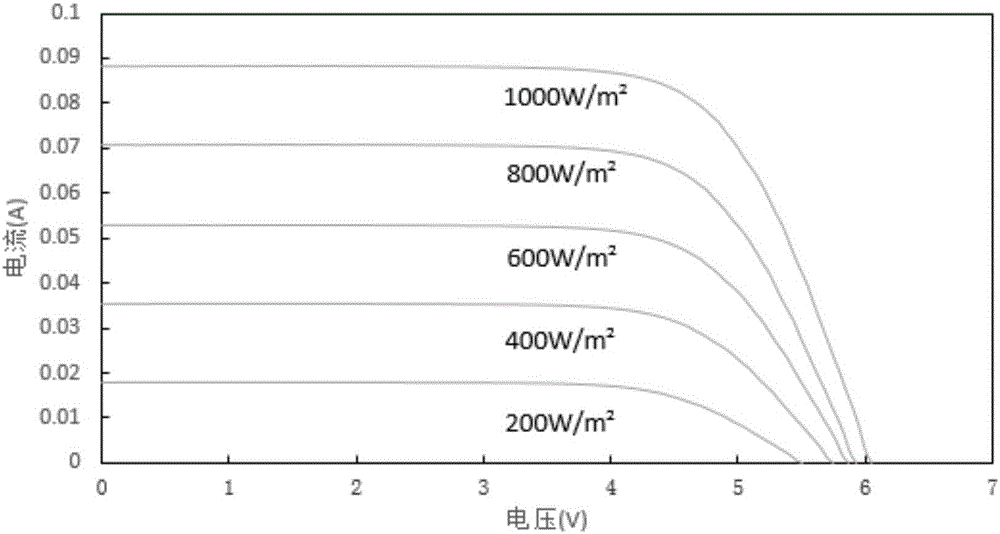Irradiance calculation method based on voltage at two ends of load of photovoltaic cell
A photovoltaic cell and voltage calculation technology, applied in the field of photovoltaic systems, can solve the problem of large calculation error of the irradiance linear model
- Summary
- Abstract
- Description
- Claims
- Application Information
AI Technical Summary
Problems solved by technology
Method used
Image
Examples
Embodiment Construction
[0030] The present invention will be further described below in conjunction with the accompanying drawings. The following examples are only used to illustrate the technical solution of the present invention more clearly, but not to limit the protection scope of the present invention.
[0031] Such as figure 1 As shown, the method of the present invention first obtains the relationship between the voltage at both ends of the load and the short-circuit current through the output characteristics of the solar cell, in combination with the relationship between the voltage and current at both ends of the load and the approximate view that the photogenerated current is equal to the short-circuit current, and uses the performance parameters of the solar cell to determine the formula performance parameters. Further use the open circuit voltage exposed to the sun and ambient temperature to calculate the temperature of the silicon cell, and combine the irradiance and the voltage across ...
PUM
 Login to View More
Login to View More Abstract
Description
Claims
Application Information
 Login to View More
Login to View More - R&D Engineer
- R&D Manager
- IP Professional
- Industry Leading Data Capabilities
- Powerful AI technology
- Patent DNA Extraction
Browse by: Latest US Patents, China's latest patents, Technical Efficacy Thesaurus, Application Domain, Technology Topic, Popular Technical Reports.
© 2024 PatSnap. All rights reserved.Legal|Privacy policy|Modern Slavery Act Transparency Statement|Sitemap|About US| Contact US: help@patsnap.com










